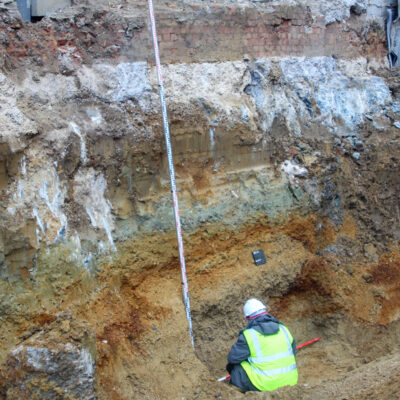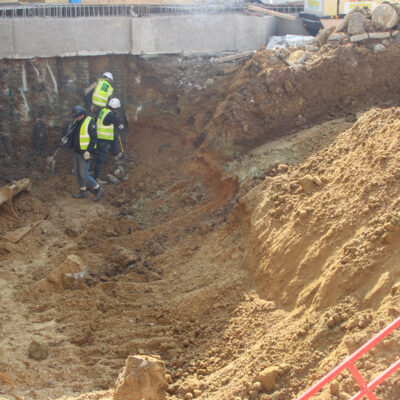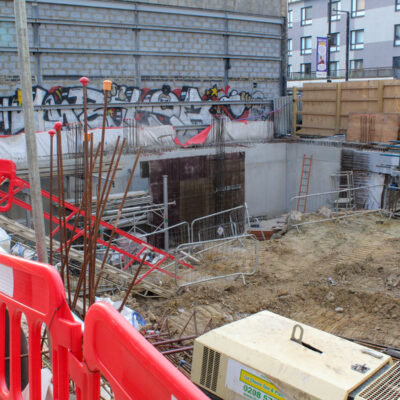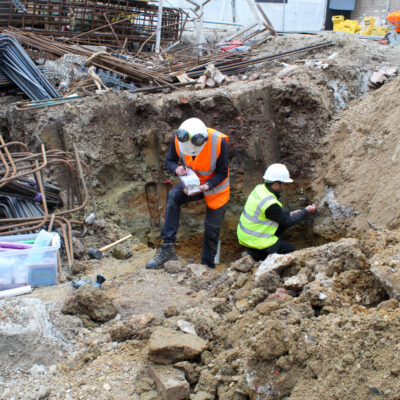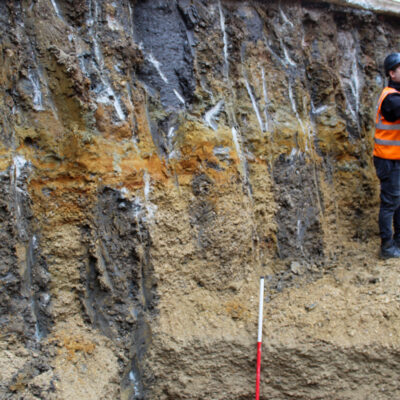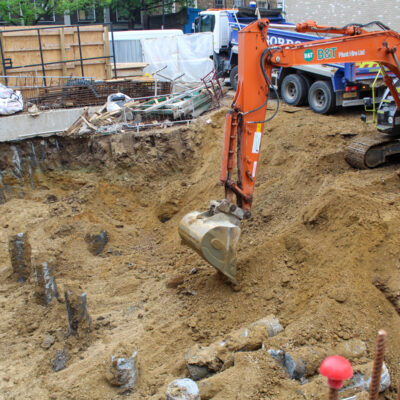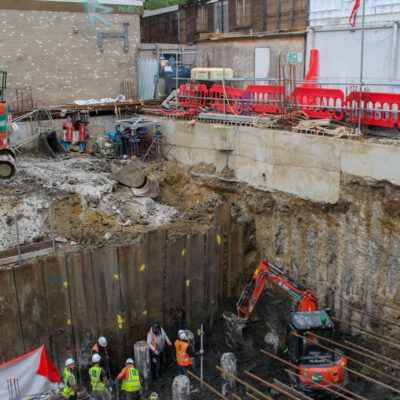Archaeological Field Evaluation & Mitigation, London
Dalston was a small medieval hamlet first mentioned in 1294 but the area is noted as being rich in evidence for early human occupation associated with the underlying Hackney Gravels.
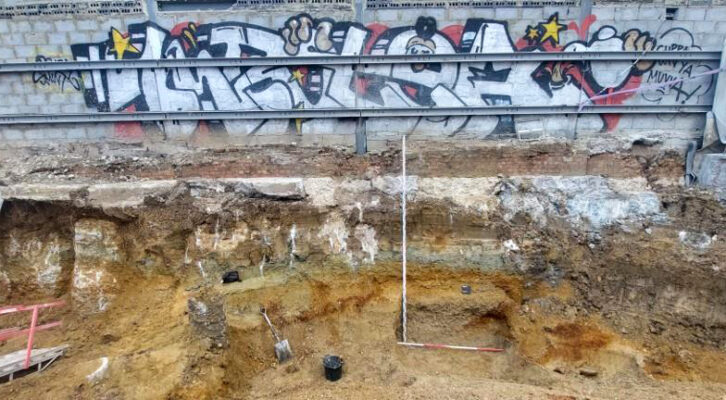
In Brief
Archaeological Field Evaluation
Archaeological Mitigation
Geoarchaeology
Quaternary Science
Key Points
- Multi-disciplinary approach
- Challenging site
- Pleistocene & Palaeolithic Geoarchaeological Monitoring
- Significant results
Summary
A Palaeolithic axe was found nearby in Tyssen Street and Palaeolithic sites with associated faunal remains previously recorded more widely are regarded as being of extreme rarity.
The proposed site clearance and construction of a seven-storey building with provision for commercial and retail space, a 51-bed hotel and a basement level was considered likely to disturb the gravels and a programme of archaeological and geoarchaeological investigation was mandated by Historic England.
A single evaluation trench was excavated across the site to establish the presence of any archaeological remains. The site was challenging and the original trench design was amended in discussion with Historic England.
The trench was stepped to reach the 4m depth of the proposed basement floor, the top of the gravels being encountered at a depth of around 2m, where a shallow gully was revealed truncated by concrete stanchions. The gully was sampled for analysis and found to be or recent origin.
Results
Two geoarchaeological trial pits excavated through the trench base to sieve for artefacts and to determine any palaeoenvironmental potential found no anthropogenic material but the identification of Highbury Sands and Silts proved significant, as these sediments are recognised as having potential to contain Palaeolithic material and had not previously been identified as far south as Dalston.
Two further phases of geoarchaeological observation were undertaken during the archaeological monitoring of development works but no Palaeolithic artefacts or Pleistocene fossils were present.

